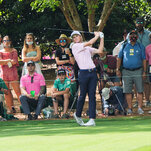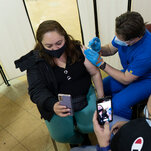The Secrets Behind the World’s Fastest Tennis Serves: Unlocking the Science of Power
Tennis serves reaching speeds of over 150 miles per hour represent one of the most impressive athletic feats in professional sports. These blistering deliveries combine raw power with precise technique, biomechanical efficiency, and years of specialized training to create moments of pure athletic dominance. Understanding the secrets behind the world’s fastest serves reveals a fascinating intersection of physics, anatomy, psychology, and cutting-edge sports science that transforms the human body into a precision power-generating machine.
The Current Speed Records
The fastest recorded tennis serve belongs to Sam Groth of Australia, who unleashed a 163.7 mph (263.4 km/h) thunderbolt during a Challenger event in Busan, South Korea, in 2012. This record-breaking serve showcases the absolute peak of human serving potential under official tournament conditions, though it’s worth noting that even faster serves have been recorded in exhibition settings and practice sessions.
Among active players, John Isner consistently ranks among the fastest servers, with his fastest recorded serve reaching 157.2 mph during the 2016 Davis Cup. Other serving specialists like Ivo Karlovic, Milos Raonic, and Nick Kyrgios regularly exceed 140 mph, demonstrating that extreme serving speed, while rare, represents an achievable goal for players with the right combination of physical attributes and technical mastery.
On the women’s tour, Sabine Lisicki holds the record with a 131 mph serve recorded at Stanford in 2014, while players like Serena Williams, Karolina Pliskova, and Aryna Sabalenka consistently serve in the 120+ mph range, proving that explosive serving power isn’t limited to the men’s game.
The Biomechanical Foundation
The tennis serve represents one of the most complex athletic movements in sports, involving a precisely coordinated sequence of actions that transfers energy from the ground through the entire kinetic chain to the racquet and ultimately to the ball. Understanding this biomechanical sequence reveals why some players can generate extraordinary power while others struggle to break 100 mph.
The Kinetic Chain in Action begins with the legs and ground reaction forces. Elite servers generate tremendous upward force through their legs, creating the foundation for all subsequent power generation. This ground force reaction can exceed twice the server’s body weight, providing the initial energy that will be transferred through the entire system.
The energy then flows through the core and torso, where the large muscles of the trunk rotate and extend to accelerate the serving arm. This core rotation is crucial – studies show that professional servers can rotate their shoulders at speeds exceeding 1,000 degrees per second during the serving motion.
Shoulder and Arm Mechanics represent the final stages of energy transfer, where the shoulder joint experiences some of the highest forces recorded in human athletic performance. The serving arm accelerates from nearly zero velocity to over 2,000 degrees per second in less than 0.15 seconds, creating tremendous demands on joint stability and muscular power.
The wrist snap at ball contact adds the final component of speed, with elite servers achieving wrist angular velocities that contribute significantly to overall racquet head speed. This sequence of accelerations, each building on the previous, creates the compound effect that enables record-breaking serve speeds.
Physical Attributes of Elite Servers
While technique is crucial, certain physical characteristics provide significant advantages for generating extreme serving speed. Height represents the most obvious advantage, as taller players can contact the ball at greater heights, creating steeper serving angles and longer levers for power generation.
Height and Leverage Effects explain why many of the fastest servers exceed 6’5″ in height. Players like Ivo Karlovic (6’11”) and John Isner (6’10”) use their exceptional height to create serving angles that would be impossible for shorter players. The higher contact point also allows for greater margin over the net while still achieving sharp downward angles.
Wingspan and Arm Length provide additional leverage advantages, with many elite servers possessing wingspans that exceed their height. This creates longer levers in the serving motion, allowing for greater racquet head speed generation through the same angular velocities.
Fast-Twitch Muscle Fiber Composition plays a crucial role in explosive power generation. Elite servers typically possess high percentages of Type II muscle fibers, particularly in their shoulders, core, and legs. These fibers contract more rapidly and generate more force than slow-twitch fibers, enabling the explosive movements required for maximum serving speed.
Flexibility and Range of Motion allow servers to achieve optimal positioning throughout the serving motion. Hip flexibility enables the distinctive serving posture that allows maximum trunk rotation, while shoulder flexibility permits the extreme overhead positions necessary for power generation without injury risk.
Technical Secrets of Power Generation
Beyond physical attributes, specific technical elements separate the fastest servers from the merely fast. These technical secrets often represent subtle differences that create dramatic improvements in serving speed and consistency.
The Trophy Position represents a crucial checkpoint in the serving motion where the racquet points skyward while the body coils for maximum power generation. Elite servers achieve distinctive trophy positions that optimize their kinetic chain sequencing, with specific timing relationships between the toss, racquet position, and body coil that maximize subsequent power generation.
Toss Placement and Timing directly influence serving speed potential. The fastest servers place their tosses with millimeter precision, typically slightly in front of their body position and at heights that allow for optimal contact timing. Consistent toss placement enables repeatable power generation and prevents the timing disruptions that reduce serving speed.
The Serve Grip affects racquet control and power transfer efficiency. Most power servers use continental or slightly modified continental grips that allow for maximum pronation through contact, adding significant racquet head speed through the natural rotation of the forearm.
Hip Drive and Core Rotation provide much of the power in elite serves, with the fastest servers achieving remarkable hip extension and rotation speeds. This core power allows the arm to act more as a whip than a lever, reducing the muscular demands on the shoulder while increasing overall power generation.
Contact Point Optimization ensures maximum energy transfer from racquet to ball. Elite servers contact the ball at the peak of their reach with precise timing that aligns maximum racquet speed with optimal ball contact, while maintaining slight upward motion to create the ideal trajectory.
Training Methods for Explosive Power
Developing the physical capabilities required for extreme serving speeds requires specialized training approaches that address the unique demands of the serving motion. Elite servers typically follow comprehensive programs that develop power, flexibility, stability, and technical precision simultaneously.
Plyometric Training develops the explosive power necessary for rapid energy transfer through the kinetic chain. Exercises like depth jumps, medicine ball throws, and explosive pushups train the neuromuscular system to generate maximum force in minimal time, directly translating to serving power.
Olympic Lifting and Power Development builds the foundation strength and explosive capability required for elite serving. Movements like cleans, snatches, and jerks develop the coordinated power generation and timing that carries over directly to the serving motion.
Core Stability and Rotation Training addresses the crucial role of trunk muscles in serving power. Elite servers typically perform extensive rotational exercises, anti-rotation drills, and dynamic stability work that enables them to generate and transfer tremendous forces through their core while maintaining precise control.
Shoulder Preparation and Injury Prevention becomes crucial for players pursuing maximum serving speeds. The extreme forces involved in fast serving place enormous demands on shoulder structures, requiring comprehensive strengthening and mobility programs to prevent injury while enabling peak performance.
Technical Repetition and Biomechanical Refinement occupies significant training time, with elite servers often hitting hundreds of serves per session while focusing on specific technical elements. High-speed video analysis and biomechanical feedback help refine the subtle technical elements that separate good servers from great ones.
The Mental Game of Power Serving
Generating maximum serving speed requires not just physical capability but also mental preparation and confidence that enables players to commit fully to their serving motion. The psychological aspects of power serving often determine whether players can access their full potential in competitive situations.
Confidence and Commitment represent essential mental components of fast serving. Players must believe in their ability to generate extreme speeds while maintaining control, requiring a delicate balance between aggression and precision. Doubt or hesitation in the serving motion immediately reduces power generation and control.
Visualization and Mental Rehearsal help elite servers maintain consistent mechanics and power generation under pressure. Many top servers use detailed visualization techniques that rehearse not just the physical motion but also the feeling of perfect timing and power generation.
Pressure Management becomes crucial in high-stakes situations where serving speed often determines match outcomes. Elite servers develop routines and mental strategies that allow them to maintain their power generation even under extreme competitive pressure.
Equipment Technology and Serve Speed
Modern racquet technology contributes significantly to the serving speeds achieved by today’s players, though equipment regulations ensure that human capability remains the primary determining factor in serving performance.
Racquet Specifications affect power generation through factors like weight distribution, string bed size, and frame stiffness. Most power servers use relatively heavy racquets with specific balance points that optimize power generation while maintaining control.
String Technology and Tension influence both power and control characteristics. Lower string tensions generally provide more power but less control, requiring elite servers to find optimal tension ranges that maximize their speed potential while maintaining accuracy.
Customization and Personalization allow top players to fine-tune their equipment to their specific serving style and preferences. Professional players typically use highly customized racquets that may differ significantly from retail versions, optimized for their individual biomechanics and playing style.
The Physics of Ball Flight
Understanding the physics of tennis ball flight reveals why certain serving techniques generate more speed and why specific ball trajectories prove most effective for different serving situations.
Magnus Effect and Spin influence both the speed and trajectory of serves, with different spin types creating various flight patterns and bounces. Flat serves achieve maximum speed but offer less margin for error, while topspin serves provide more net clearance and consistent bounces at slightly reduced speeds.
Air Resistance and Drag increasingly affect ball flight at higher speeds, with the fastest serves experiencing significant air resistance that affects both speed and trajectory. Understanding these aerodynamic effects helps servers optimize their ball placement and spin selection.
Court Surface and Ball Bounce characteristics influence serving strategy and effectiveness. Faster surfaces like grass reward raw serving speed, while slower surfaces may favor servers who can combine speed with placement and spin variety.
Injury Risks and Prevention
The extreme forces involved in generating the fastest tennis serves create significant injury risks that players must carefully manage through proper preparation, technique, and recovery protocols.
Shoulder Injuries represent the most common risk for power servers, with the serving motion creating forces that can exceed the structural limits of shoulder joints and surrounding muscles. Proper strengthening, mobility work, and technical refinement help minimize these risks.
Back and Core Injuries can result from the tremendous rotational forces generated during serving, particularly when players have strength imbalances or technical flaws that create inefficient movement patterns.
Elbow and Wrist Issues may develop from the rapid accelerations and decelerations involved in serving, especially when players attempt to generate maximum power without proper technical foundation or physical preparation.
The Future of Fast Serving
Tennis serving speeds continue to evolve as players, coaches, and sports scientists develop new understanding of biomechanics, training methods, and technical refinements that enable even faster serves while maintaining accuracy and reducing injury risk.
Biomechanical Analysis Advances using high-speed cameras, force plates, and motion capture technology provide increasingly detailed understanding of the technical elements that generate maximum serving speed, enabling more precise technical coaching and development.
Training Technology Integration including wearable sensors, real-time feedback systems, and virtual reality training environments may accelerate the development of serving power while reducing injury risks through better movement monitoring and correction.
Equipment Evolution within existing regulations may provide incremental improvements in serving speed potential, though the primary limiting factors will likely remain human biomechanical capabilities rather than equipment limitations.
Conclusion
The secrets behind the world’s fastest tennis serves reveal a fascinating combination of genetic gifts, technical mastery, physical preparation, mental toughness, and technological optimization that pushes human athletic performance to its limits. While not every player possesses the physical attributes necessary to join the 150+ mph club, understanding these principles can help players at all levels improve their serving speed and effectiveness.
The pursuit of serving speed represents more than just the quest for impressive statistics – it embodies the relentless human drive to push beyond perceived limitations and achieve new levels of athletic excellence. As our understanding of biomechanics, training methods, and technical refinements continues to evolve, future generations of tennis players may well shatter today’s serving speed records while inspiring new appreciation for the incredible complexity and beauty of human athletic performance.











